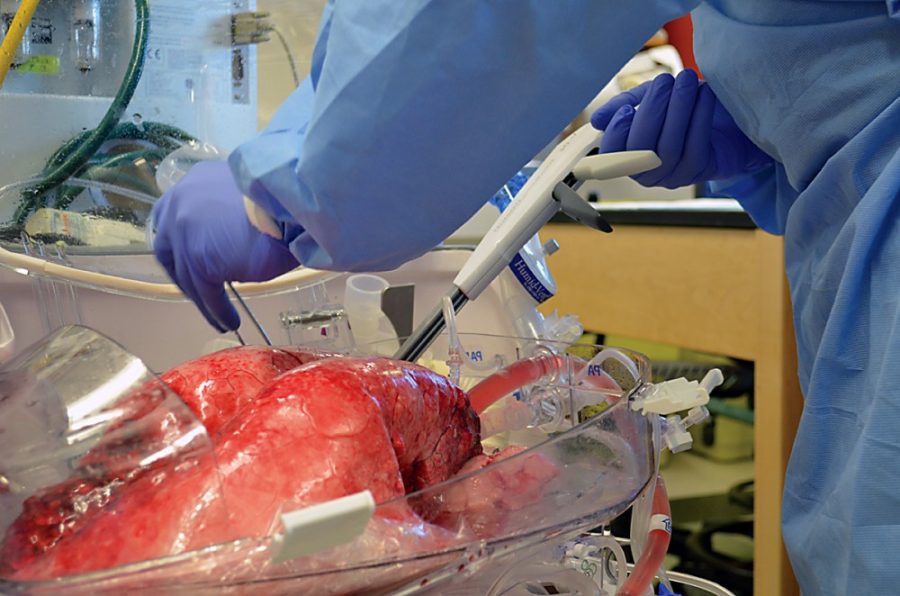A desktop printer lays open on a table with its insides exposed. What looks like a messy operation is actually the beginning of a UA medical research project to create a customizable 3-D bioprinter.
3-D bioprinters function similarly to standard printers, said Dr. Zain Khalpey, the lab’s primary investigator.
“Instead of using red, blue and black ink, you can use bio-ink, which is basically made of protein,” Khalpey, who is also a cardiothoracic surgeon at the University of Arizona Medical Center, said.
The world’s first commercial bioprinter, the NovoGen MMX Bioprinter, was put on the market in 2009 by a company based in San Diego called Organovo.
“The novelty in what we are doing is that we are creating something completely customizable,” said medical student Alice Ferng.
Ferng’s primary role is to create a bioprinter prototype for the lab, a process which included dissecting the desktop printer.
By creating its own bioprinter from scratch, the lab will not have to outsource to other companies, said Kitsie Penick, the lab’s program coordinator.
Once the lab creates its own functional 3-D bioprinter, it can be used to provide relief to the growing number of people in the U.S. who need organ transplants, Khalpey said.
There are currently more than 77,000 active candidates on the national transplant list, according to the United Network for Organ Sharing, and on average, 18 people die every day from the lack of organs available for transplant, according to Donate Life America.
Ferng said that she plans to transform the inkjet printer into a 3-D bioprinter by adding a vertical printing dimension and by swapping out the standard ink for bio-ink, which is made by decellularizing damaged tissue with detergent so that all that is left is the extracellular matrix.
The extracellular matrix is well-suited to generating transplant organs because it is a faceless protein complex that does not cause immune system attack by the recipient, Ferng added.
The lab plans on making a unique bio-ink concoction that is fortified with the organ recipient’s own stem cells called “smart ink,” Khalpey said.
“Our ultimate goal is to make an organ that you can transplant,” Ferng said. “ Bioprinting is just the synthetic part of that.”
The bioprinter project is one of the lab’s three major focuses. The other two areas of research include the use of bioreactors and organ regeneration, which is the refurbishing of damaged organs to make them transplantable.
All three areas of research are closely related, Khalpey said.
“There are a lot of complicated geometries required to mimic an organ because there are many different pieces of research that need to go into it,” said senior biomedical engineering undergraduate Brigid Smith. Smith has been working in Khalpey’s lab since June.
The research team plans to use the 3-D bioprinter in correspondence with a bioreactor it is crafting, Khalpey said.
“The 3-D printing is very New Age and very cool because we can make it into reality by building a 3-D bioreactor,” Khalpey said.
Bio-ink can be used to print small tissue samples that can be placed into a bioreactor, where they can potentially grow into an organ, Khalpey added.
This technique is known as an “organ in a drop,” according to respiratory therapist Anthony Louis. Louis is doing his graduate work in Khalpey’s lab.
“We want to use the ‘lung in a drop’ study to see what components are necessary to form a human-sized lung,” Louis said. “Once we figure that out, we can migrate to organ regeneration.”
Although the lab is still working out the kinks, Khalpey said that the research will become reality in the near future.
“We are going to bring this technology from the [lab] bench to the bedside,” Khalpey said.









